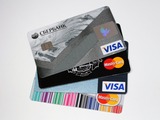
This lesson is to help students analyze aspects and features of credit cards to know how to determine which would be best for various situations.
- Subject:
- Educational Technology
- Material Type:
- Lesson Plan
- Author:
- Lexi Shafer
- Date Added:
- 05/22/2018
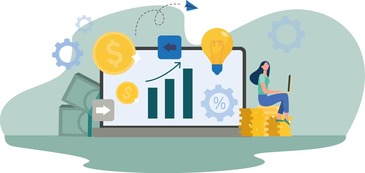

This lesson is to help students analyze aspects and features of credit cards to know how to determine which would be best for various situations.

This website guidance document describes the Debt Slapped project, produced by Consumer Education and Training Services. Debt Slapped provides videos and helpful resource links to help people smartly finance their education.
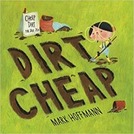
Within this collection you will find lessons and handouts you can use in your classroom. You will also find a brief summary of each resource with the source sited for further exploration, appropriate grade level, approximate lesson length, and learning standards.
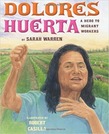
Within this collection you will find lessons, videos, handouts, and teacher guides you can use in your classroom. You will also find a brief summary of each resource with the source sited for further exploration, appropriate grade level, approximate lesson length, and learning standards.
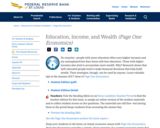
No surprise—people with more education often earn higher incomes and are unemployed less than those with less education. Those with higher incomes also tend to accumulate more wealth. Why? Research shows that well-educated people tend to make financial decisions that help build wealth. Their strategies, though, can be used by anyone.
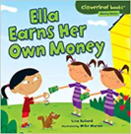
Within this collection you will find lessons, videos, handouts, and teacher guides you can use in your classroom. You will also find a brief summary of each resource with the source sited for further exploration, appropriate grade level, approximate lesson length, and learning standards.
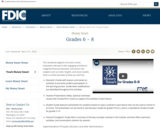
This standards-aligned curriculum series empowers educators with engaging activities to integrate financial education instruction into subjects such as math, English, and social studies. Here is a brief overview of what you will find:
Educator’s Guide with lessons and hands-on activities to promote student participation in the learning process. Grade-level modifications are identified throughout the activities.
Teacher Presentation Slides, optional overhead visuals that include fill-in charts to support the activities of each lesson.
Student Guide features worksheets for students based on topics covered in each lesson that can be used at school or at home. The worksheets can be found in the Educator Guide for grades Pre-K-2, and in a standalone Student Guide for grades 3-12.
Parents’/Caregivers’ Guide with a summary of the key concepts covered in the module, and that offers exercises, activities, and conversation-starters for parents.

Financial education resource collections suggested by Financial Education Public Private Partnership during their training sessions.
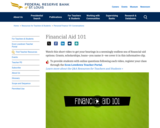
Watch this short video to get your bearings in a seemingly endless sea of financial-aid options. Grants, scholarships, loans—you name it—we cover it in this informative clip.

The cost of college should never discourage anyone from going after a valuable degree. –Arne Duncan, former United States Secretary of EducationLEARNING OBJECTIVESBy the end of this section, you will be able to:Establish financial goalsIdentify strategies for creating and maintaining a budgetDescribe available options for paying for collegeDescribe the benefits and risks of creditDevelop financial literacy skills to prepare for your financial future
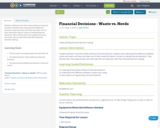
Students will learn how their values influence financial decisions. Students will understand the difference between a want and need, and they must take care of their needs first when it comes to making financial decisions. They will also learn how opportunity costs and trade-offs can help them with their financial decision making.
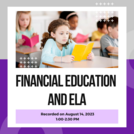
Financial Education & ELA, K-5Discover how children’s picture books can be used to teach personal finance! This resource-based training will introduce participants to the FEPPP Library, a diverse collections of titles with personal finance themes and SEL opportunities, as well as the Bilingual Spanish Library, featuring bilingual read-alouds and dual language resources. In addition, educators will receive Lesson & Resource Guides featuring no- or low-prep text-aligned lessons and activities.Webinar recorded on August 14, 2023
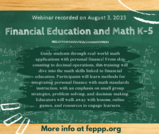
Guide students through real-world math applications with personal finance!From skip counting to decimal operations, this training will dive into the math skills linked to financial education. Participants will learn methods for integrating personal finance with math standards instruction, with an emphasis on small group strategies, problem-solving, and decision-making. Educators will walk away with lessons, online games, and resources to engage learners.
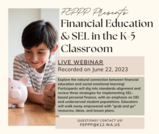
Financial Education & SEL, K-5Explore the natural connection between financial education and social-emotional learning! In this training, participants will dig into standards alignment and review three strategies for implementing SEL-based personal finance in the elementary classroom, with an emphasis on DEI and underserved student populations. Educators will walk away empowered to integrate SEL and financial education using “grab and go” resources, ideas, and lesson plans.

Discover strategies to empower migrant, dual-language, Native, and other underserved youth populations with financial confidence and capability!This training focuses on providing equitable access to financial education, with a whole-student, asset-based approach rooted in social emotional learning. Educators will receive culturally relevant and equitably translated resources, as well as suggestions to engage with families and communities within financially vulnerable populations.

Students will use their knowledge or availability and scarcity to determine income and earnings.

Within this collection you will find lessons, videos, handouts, and teacher guides you can use in your classroom. You will also find a brief summary of each resource with the source sited for further exploration, appropriate grade level, approximate lesson length, and learning standards.
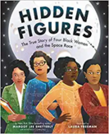
Within this collection you will find lessons, videos, handouts, and teacher guides you can use in your classroom. You will also find a brief summary of each resource with the source sited for further exploration, appropriate grade level, approximate lesson length, and learning standards.
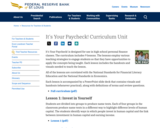
It's Your Paycheck! is designed for use in high school personal finance classes. The curriculum contains three sections: "Know Your Dough," "KaChing!" and "All About Credit." The lessons in each of these sections employ various teaching strategies to engage students so that they have opportunities to apply the concepts being taught. Each lesson includes black-line masters of the handouts and visuals needed to teach the lesson.
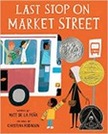
Within this collection you will find lessons, videos, handouts, and teacher guides you can use in your classroom. You will also find a brief summary of each resource with the source sited for further exploration, appropriate grade level, approximate lesson length, and learning standards.